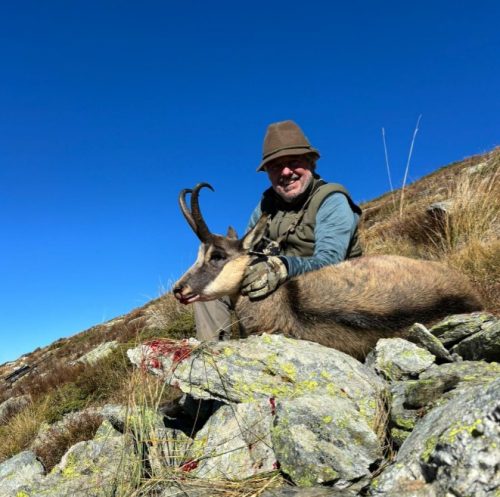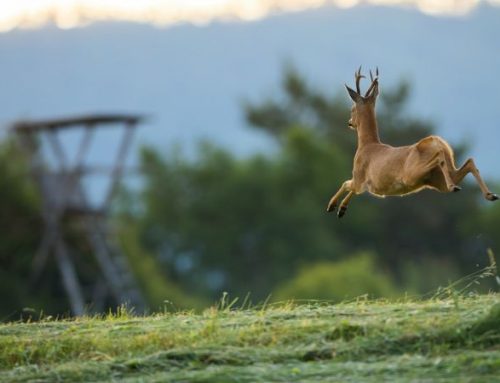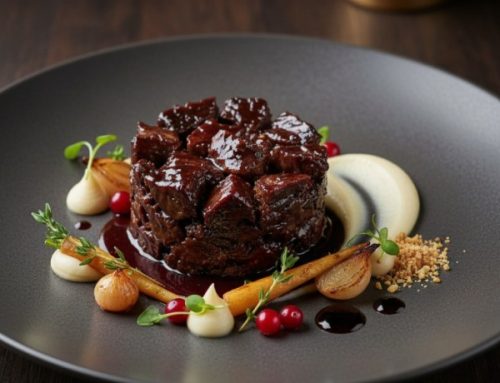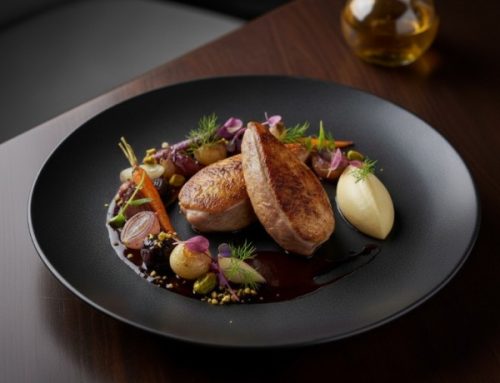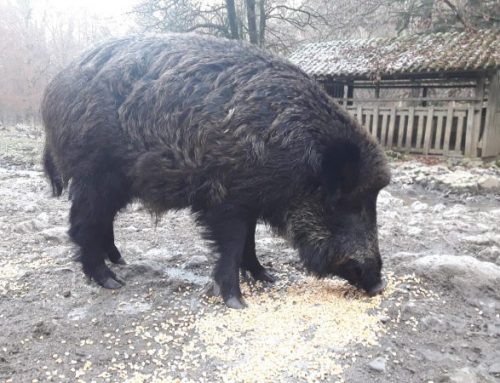Chamois hunting in the Piedmont valleys has always offered unique emotions for true hunters.
The world of big game hunting is not only sought abroad; Italy, with its diverse topography, offers sports hunters many interesting possibilities.
The Apennine and Alpine mountain ranges become high-quality hunting areas thanks to careful management derived from selective hunting and, above all, thanks to the game and hunting companies that impeccably monitor their territory and wildlife.
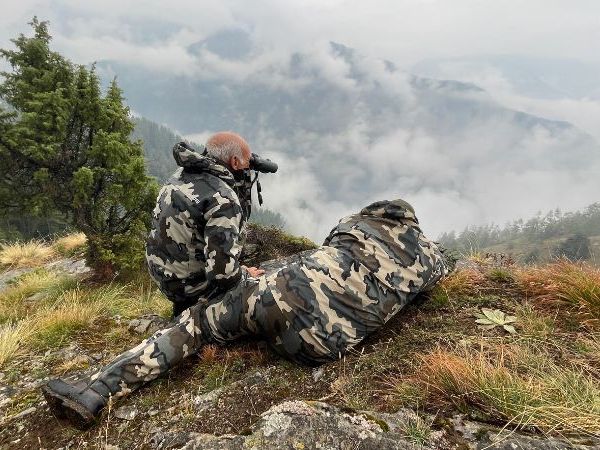
The Ghost of the Mountains
The chamois is often referred to as the “Ghost of the Mountains.” This nickname comes from its elusive nature, agility, and ability to move silently and swiftly across rugged and steep terrain, making it seem almost like a fleeting apparition to hunters and observers alike.
In particular, when speaking of big game hunting, we refer to the chamois, an herbivorous mammal that has a robust and compact body. It has a brown and blonde coat in summer, which becomes much darker, almost black, in winter. The chamois is equipped with permanent horns that are simple and hooked at the end, and they are of ebony color.
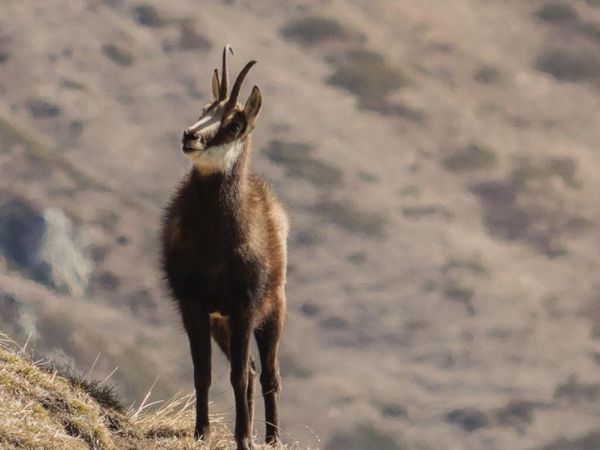
The habitat of the chamois is typically mountainous, subalpine, and alpine, where it can move agilely on rugged terrain, climbing steep walls, making this hunt extraordinarily thrilling.
With diurnal habits for both feeding and moving, it is most active at dawn and dusk. For these reasons, encounters with the gamekeeper and the start of the hunt begin before dawn.
It is the king of Italian hunts and the result is the great interest even among foreign hunters. A hunt that can be the most difficult and demanding, testing physical endurance and hunting skills, arousing the greatest interest among hunters.
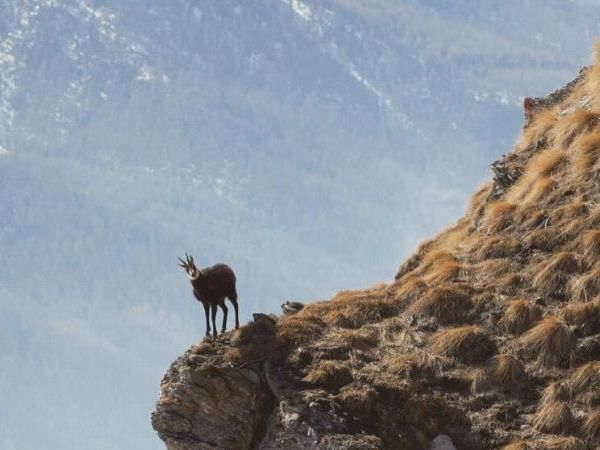
When the hunting season finally begins for this ungulate, the hunter can enjoy the changing of the mountains: from the green pastures of September to the shimmering reds of autumn, and into the intense cold brought by November snowfalls. This month marks the rutting season, “brunft,” where males chase and challenge each other to secure females. The efforts and early starts will certainly be rewarded by the intensity of this adventure.
The hunting grounds for chamois in Italy that Montefeltro proposes are in Val Maira and Val Clarea. The first is an alpine valley in the province of Cuneo in the territory of the Langhe Piedmont, dominated almost entirely by pristine nature. The second, Val Clarea, is a short tributary valley of the Val di Susa in the province of Turin, surrounded by steep cliffs, numerous watercourses, and significant waterfalls.
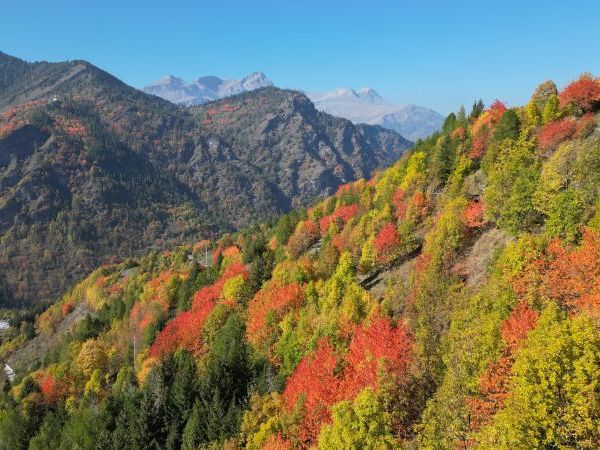
In these areas, trophy chamois (bronze, silver, and gold) can be found both for males and females, as well as beautiful yearlings (chamois in their second year of life).
Spotting these formidable animals is not difficult; on the contrary, it will be more challenging to approach them and position oneself at the right distance for the shot.
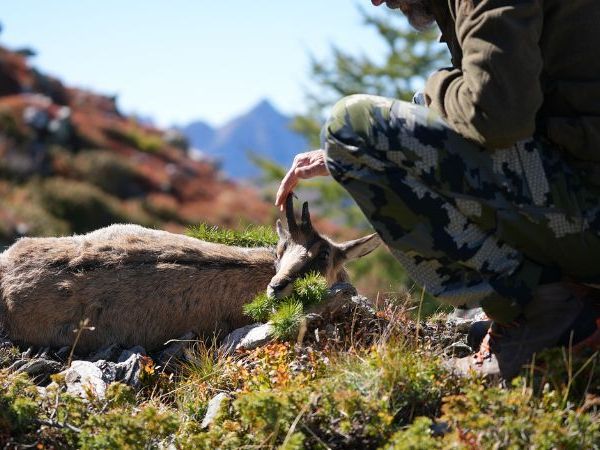
Chamois hunting demands precision, patience, and a thorough understanding of both your firearm and optics. These agile and alert animals often reside in rugged alpine environments at high elevations, where shots are typically taken at long distances, often over uneven terrain, and with rapidly changing weather conditions. As such, having a rifle equipped with high-quality optics and using a well-suited caliber is crucial for a successful hunt.
Recommended Calibers for Chamois Hunting
Choosing the appropriate caliber for chamois hunting is a balance between effective range, accuracy, and terminal ballistics. The goal is to ensure that your bullet reaches its target accurately and retains enough energy to deliver a clean, humane shot without causing excessive meat damage. Here’s a breakdown of some of the most suitable calibers:
- 6.5×55 Swedish Mauser: A classic caliber known for its mild recoil and exceptional accuracy. The 6.5×55 is ideal for hunters who want a flat-shooting round that can perform well at longer distances while delivering sufficient terminal energy. Its lighter recoil allows for precise shot placement, which is essential when targeting a relatively small animal like a chamois.
- 6.5 Creedmoor: Similar to the 6.5×55 but with modern enhancements, the 6.5 Creedmoor has become one of the most popular calibers for mountain game due to its high ballistic coefficient, minimal wind drift, and stable flight path. It’s perfect for shots taken at longer ranges, often necessary when hunting chamois in open, mountainous terrain.
- .270 Winchester: The .270 Win is well-known for its flat trajectory and long-range capability. With moderate recoil and good bullet selection, it provides plenty of power for cleanly taking down chamois, even at extended distances. This caliber is a solid choice for those looking to balance knockdown power and precision.
- .308 Winchester: Cusin of the 6.5x55SE is traditionally associated with larger game but the .308 Win’s versatility and accuracy make it a reliable choice for chamois hunting, particularly if longer shots are expected. With a wide range of bullet weights available, it offers the flexibility to adapt to different hunting conditions and distances.
- .280 Remington: Often overlooked, the .280 Rem is a fantastic caliber for mountain hunting. It offers a flatter trajectory than the .30-06 and packs more power than the 6.5 calibers, making it an ideal choice for those seeking to reach out to distant targets without sacrificing bullet performance upon impact.
- 7mm Remington Magnum: If long-range shots are the norm and you want a caliber that carries energy effectively even past 300-400 meters, the 7mm Rem Mag is hard to beat. It delivers a combination of high velocity and bullet weight that ensures reliable penetration and quick expansion, crucial for bringing down chamois at longer ranges but it’s recoil is huge.
- .300 Winchester Magnum: This powerful caliber is best suited for experienced hunters comfortable with its recoil. While it might seem overkill for chamois, it shines in situations where very long shots are required. The .300 Win Mag’s high velocity and energy retention allow it to buck the wind effectively, and its heavier bullets can handle longer shots where other calibers may struggle.
Why the Right Caliber and a Good Shot Matter
The right caliber choice is paramount in chamois hunting due to the specific challenges posed by this particular type of hunt. Chamois are relatively small and nimble animals, and their habitat often forces hunters to take shots across deep valleys, steep slopes, or ridges where the terrain can be unforgiving and the shooting angles difficult. This makes precision even more critical because a poorly placed shot can result in wounding the animal or a prolonged recovery.
Moreover, chamois are known for their resilience and, if not hit correctly, can cover a surprising amount of ground even after being shot. A good shot in the vitals is necessary to ensure the animal is taken down quickly and humanely, minimizing the risk of it running off to inaccessible terrain. This is why calibers that offer a flat trajectory, minimal wind drift, and enough energy at long range are essential. If the bullet drops too much or is easily deflected by crosswinds, the shot can miss the vitals or result in an unclean hit, making retrieval challenging and compromising the hunt’s ethics.
In addition, mountain terrain often requires shooting at steep angles, which can affect bullet drop and impact point. Calibers with higher velocities and better ballistic coefficients (like the 6.5 Creedmoor or 7mm Rem Mag) are better equipped to handle these scenarios. High-quality optics with turret adjustments or ballistic reticles are recommended to help compensate for these variations, ensuring that you can confidently place your shot, even at unconventional angles.
Optics: The Key to Long-Range Success
Optics play a pivotal role in chamois hunting. A good scope with high magnification is necessary to pick out animals at long distances and differentiate between males and females, or evaluate the age of a trophy. Look for scopes with ballistic turrets or reticles that allow you to adjust for both distance and windage. These features can make the difference between a clean shot and a missed opportunity, especially when time is of the essence.
In conclusion, a successful chamois hunt is not just about having the right caliber, but also knowing how to use it effectively. Combining the correct rifle, optics, and caliber allows you to maximize your accuracy and minimize the chance of wounding the animal, ensuring a successful and ethical hunt. After all, a well-placed shot is the culmination of skill, preparation, and respect for the game, and it’s this combination that makes chamois hunting a true test of a hunter’s marksmanship and experience.

The new bolt action from Benelli: Lupo Hpr BEST perfect for chamois hunting
Would you like to try approaching them and positioning yourself at the right distance for the shot?
Book your trip and set off for chamois hunting.


